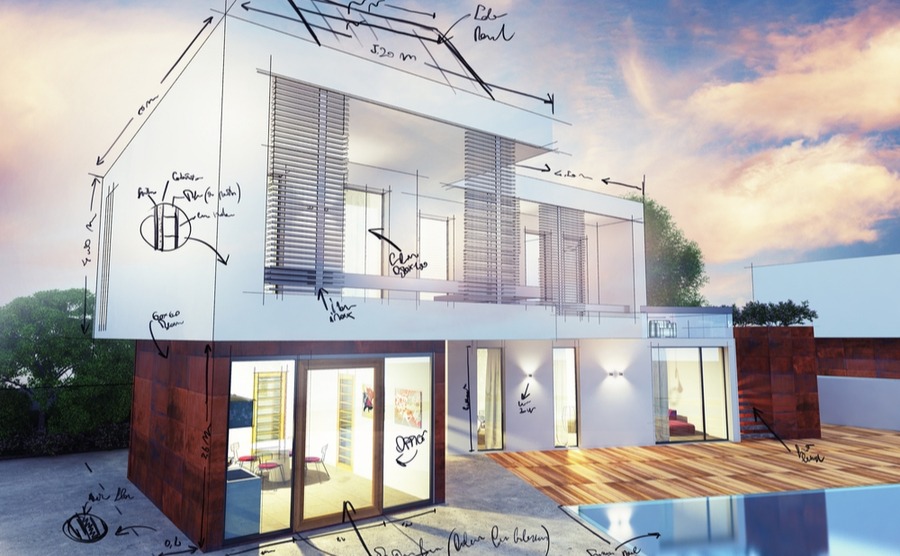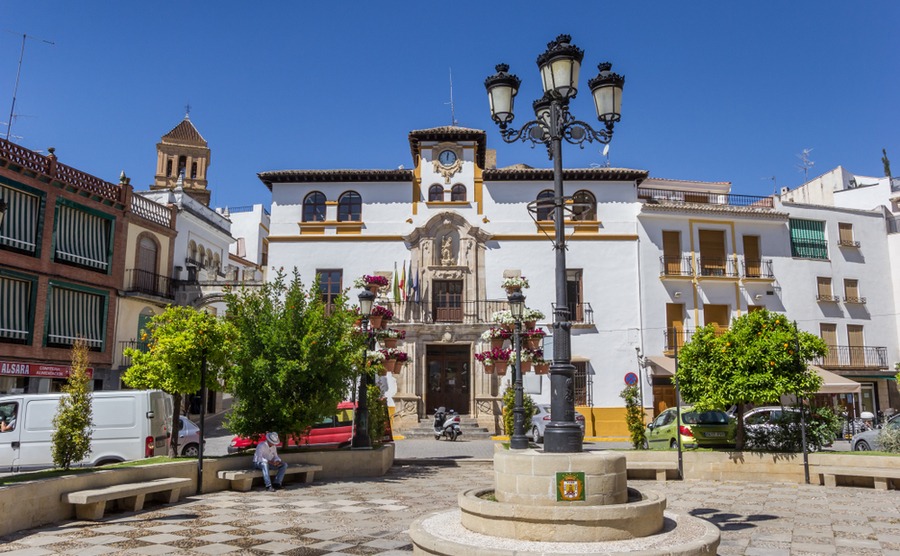How do you find an architect and get the planning permission to build your own home in Spain? Last month we covered buying a building plot in Spain, and the basic types of land to build a property. When you’ve bought the plot, if you haven’t already, you will need to get an architect in Spain. Together you will be able to test the basic feasibility of your project, refine it, cost it and get planning permission.
It may not look that way if you’re on the beach in Benidorm in August, but at Spain is a large, relatively empty country. Building your own Spanish home on a plot of land of your choosing is much more doable than in the overcrowded UK. When you have bought your building plot in Spain, you can start to imagine the kind of property to build on it. And then apply for planning permission.

What you want and where you want it: self-building in Spain
Choosing an architect in Spain
There is only one established professional body of Spanish architects, the College of Architects CSCAE, which has various local associations. You may find an architect that’s a member of the Royal Institute of British Architects (RIBA) too. After all, architects enjoy living in Spain too!
Of course you also want the right architect. One that is excellent at designing public toilets or car parks probably won’t be right. This is where the self-building community really comes into its own, with tips and recommendations on finding good local architects. The website www.ecohabitar.org is a good starting point.
FIND land and properties in Spain
What soon becomes clear is that it isn’t the work that is the problem with self-building in Spain, but the planning permission and the building regulations. Therefore it is essential to find an architect with experience of working with the authorities in your local area.
You need an architect who can cope with the task, so do insist on seeing previous work that they have done. And you want an architect you can get along with – so ask to meet people who have had work done. An architect who doesn’t have a roster of satisfied clients should ring alarm bells. Being able to speak English – assuming you are not fluent in Spanish – is also highly desirable.
The third ingredient after competence and agreeableness, is enthusiasm. This could be the project of your lives and your architect needs to be as excited as you!
Cost of an architect
For a good quality new-build villa the architect’s fees are likely to be up to 10% of the overall construction cost. One confusion is over the Precio Ejecucion Material (PEM). This is an official price of materials put out by the CSCAE. You may see an architect charging 10-15% of this price and believe you’re being overcharged. However, the PEM is actually lower than the real costs of construction.
Remodelling older buildings may cost more, because the architect has to fit your plans around the limits of an older construction, so allow for 12% here.
You can also pay by the hour, at around €100-150 per hour. However this does seem a little uncertain when the project may take many months, or even years, to complete. Your architect can be your greatest ally; in building with builders, the authorities and suppliers of materials. So do bear that in mind when establishing costs as they may charge for services – such as getting quotes from builders – that save you plenty more than they cost.
Lastly, someone will need to ensure that the building conforms not just to your requirements as it goes up, but building regulations too. An architectural engineer or technical architect, aparejador, will normally be the person to do that. Read more about their work in part 3.
You pay around two thirds of the architect’s fee when construction begins. The balance is due when certain certificates and licences are issued when the building is finished. These include the certificate of new work (certificado de fin de obra nueva), licence for the first occupation (licencia de primera ocupación) and a declaration that the house is habitable (cédula de habitabilidad).
Get in touch with a trusted property lawyer today – they’ll help you avoid any of the legal pitfalls when buying land to build.
Basics of design
We could write a book on this! However, as a surveyor more often called on when problems have arisen with a building, Campbell Ferguson of Survey Spain points out a few essentials in Spanish architecture: “Good design costs the same as bad, but thereafter the joy is in lower costs and greater comfort. Don’t just build for the summer. Remember there is a winter here too and occasional weeks of steady rain. Build for that first and then heat amelioration. Always include gutters with the water being directed away from the sides of the building to prevent rising damp; plus external shading to stop the sun, even in winter days, from heating the inside like a sauna.”
Planning permission in Spain

You could be spending a lot of time at a building like this: a town hall in Spain (Marc Venema / Shutterstock.com)(
Talk to any self-builder in Spain and it soon becomes apparent that this is the biggest headache of all. There are both planning permissions and building regulations to follow. Moreover, these can vary from region to region and from old to new buildings. The general attitude is that you should expect the process to be more long-winded (painful even) than you expect, but that it is possible! Moreover, the tighter rules are a direct response to lax regimes of the past. This is good news for those who do obtain permission legally.
If building your own home in Spain feels like too much work, but you’d like a brand new home with some say in the design, buying off plan might be right for you. Download your FREE Spain Off Plan Guide.
You or your architect applies for your works licence (Licencia de Obra) at your local town hall (ajuntamiento). There are two kinds of building licences in Spain:
- Licencia de Obra Mayor (Licence for major work). This is for those who wish to build a new property, extend a property or alter its structure in any way. You will need a local architect for this and permission from your town hall.
- Licencia de Obra Menor (Licence for minor work). Fundamentally this applies to interior work, alterations, replacements, painting interior walls, patios or anything that is invisible from the outside of a property.
However, there are different types of licences within each category and they will need different documentation. You may need a:
- Licencia de obra Mayor de Amplificación – if you are extending the existing building.
- Licencia de obra Mayor por rehabilitación de edificios (major works licence for building restoration) – if you are restoring a historic building in a city centre. These buildings are of national importance, like listed buildings in the UK.











